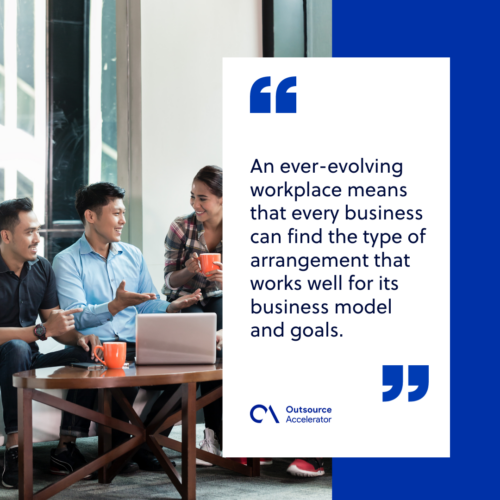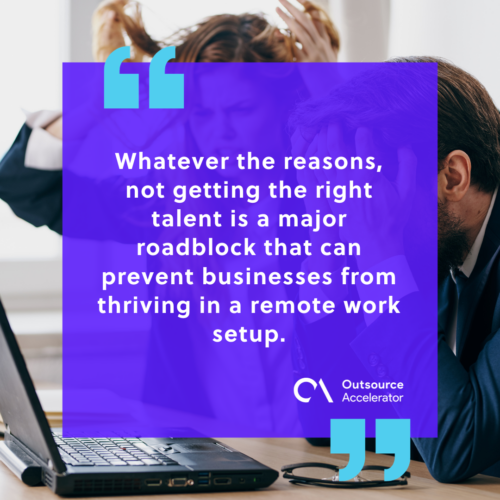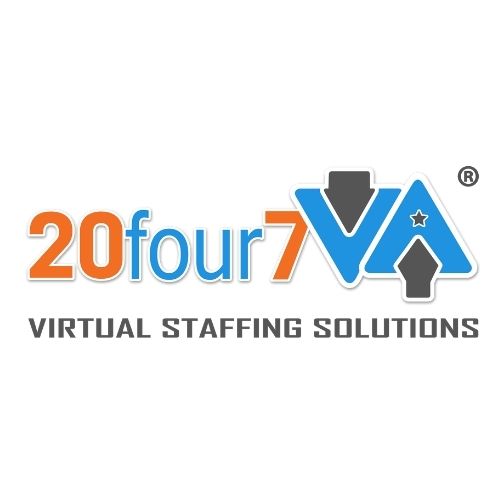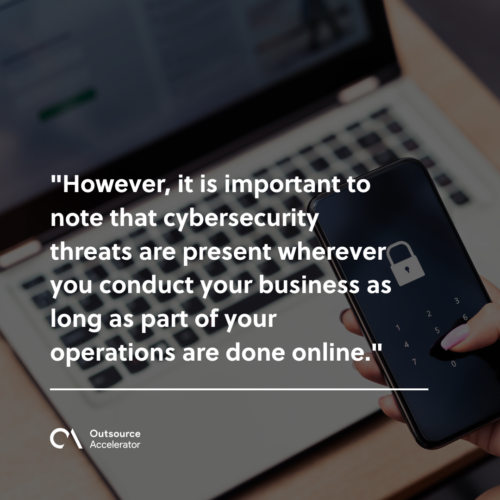Modern workplace: How to reap its benefits and address challenges

This article is a submission by 20four7VA. 20four7VA is a trusted remote hiring company specializing in cost-effective, end-to-end offshore contract staffing solutions to all businesses worldwide.
The way we work is continuously evolving.
As job seekers increasingly prioritize flexibility in their careers, remote jobs and virtual teams are becoming more commonplace in the modern workplace.
Employers, too, see the value of distributed and remote teams to business productivity, employee retention, and their bottom lines.
However, hiring remote talents or distributed teams doesn’t mean smooth sailing for all businesses.
There are still challenges that come with the new ways of working. And to reap the many benefits of the modern workplace, employers must face these challenges head-on.
Benefits of the modern workplace
The beauty of the modern workplace is that it can look different depending on the organization. Instead of the traditional office setup, companies can opt for:
- Hybrid work arrangement
- Fully remote
- Hire remote talents full-time or part-time
An ever-evolving workplace means that every business can find the type of arrangement that works well for its business model and goals.
But one thing’s certain: these new workplace setups offer plenty of benefits. Whether you opt to hire a fully remote team or a mix of onsite and remote workers, you’ll find improvements across the board.

Cost savings
With a fully remote team, companies don’t have to spend so much on overhead expenses.
Office rent, which is typically the largest of the fixed overhead expenses, can be cut down or eliminated when you adopt a virtual modern workplace setup. At the same time, workers don’t have to spend as much on personal costs such as transportation and eating out.
Another way businesses can save even more is through offshoring functions, especially ones that don’t typically require onsite employees, such as data entry, email marketing, or lead generation.
By hiring remote talents from anywhere in the world, teams can improve productivity without bloating their labor costs.
Global talent pool
A remote workplace opens up your business to even more talent. You’re no longer limited by geographical location. Instead, you can focus on a candidate’s skills, experience, and how well they can fill a role in your organization.
If you have specific requirements or need someone with more niche skills, keeping your talent pool within a city can make it challenging to find the most suitable person.
With outsourcing practices, you’ll likely find customized staffing solutions aligned with your business needs.
Increased productivity
When you hire the most well-suited people for the job, it will be more simple to onboard and train them. They’ll be able to contribute to the team faster.
In turn, the rest of your team will be able to manage their workload better with an additional person. All these equate to improved productivity and better results.
Top challenges of an evolving modern workplace
Of course, any change comes with its own set of challenges. It’s up to companies to rise to the challenge to make sure they’re setting their business and workforce up for success.
Here are some of the typical challenges of a modern workplace:
1. Getting the right talent
One challenge businesses that are new to remote work and remote staffing face is the difficulty in finding the right talent.
It could be that screening and recruiting from a global talent pool may be on a different scale from limiting the candidate pool within a certain city.
Solution: Know where to look or ask for expert help
Recruiters may have a hard time with the volume, or their traditional recruitment process may not be optimal for finding remote professionals.
Whatever the reasons, not getting the right talent is a major roadblock that can prevent businesses from thriving in a remote work setup.
The best way to address this problem is by finding the time to research the right channels to look for remote talents. Doing so is especially important for those looking for professionals with a niche like Telehealth or real estate.

Another excellent option is to ask for expert help. This can save you tons of time and money in the long run.
Offshoring is great for companies that want to get the job done well without investing too much time or resources.
Virtual staffing companies like 20four7VA can help you find the right remote talents to provide support on anything, from administrative tasks to more specialized functions like video editing or bookkeeping.
2. Staying aligned and connected despite the distance
The physical distance among employees can cause a disconnect. This will affect collaboration and coordination.
Additionally, the lack of connection and engagement can also negatively impact employees’ well-being. Employees who miss the feeling of camaraderie in a physical office tend to feel isolated when working remotely.
Solution: Keep communication lines open
The best solution for addressing this modern workplace challenge is two-pronged.
First, companies must ensure that they have the right types of tools for both asynchronous and synchronous communication and make sure everyone has access to said tools.
Then, leadership must encourage the regular usage of such tools, whether it’s for collaboration or more informal (yet still professional) interactions.
Keeping communication lines open will help integrate remote workers or freelancers into your organization. This not only helps boost cohesion and employee engagement, but it can also improve output quality.
Here are some examples you can try to encourage both formal and informal interactions between employees:
- Virtual coffee breaks
- Use the right communication tools
- Encouraging two-way feedback
- One-on-one check-ins
- Weekly team huddles
- Establishing an online platform for feedback and celebrating wins
3. Protecting employees’ well-being
What worked in a traditional office setup may not always translate well for hybrid or fully remote teams.
Protecting employees’ well-being in the modern workplace requires some adjustments that not a lot of employers do.
Whether they cancel all wellness initiatives altogether or limit the wellness efforts to in-office staff, employers can negatively affect their remote staff’s health.
Solution: Redesign your employee wellness efforts
While many workers appreciate the flexibility and opportunity to improve their work-life balance that working remotely offers, it doesn’t mean that they don’t need their employers’ support when it comes to protecting their well-being.
Redesigning employee wellness efforts should be a part of every company’s short and long-term organizational strategies. Here are some examples of wellness efforts you may want to consider:
- Designing and implementing work-from-home safety policies
- Virtual mental wellness exercises
- Wellness reminders to encourage employees to take computer breaks
- Setting clear boundaries on work hours and deadlines
- Implementing a virtual meeting free day (e.g., no meeting Fridays)
4. Securing employer and customer data
A remote workplace can pose major security challenges. Doing most, if not all, of your business operations online can make your organization vulnerable to cyber attacks like identity theft or viruses.
The risk of making the business vulnerable is enough for some business leaders to call everyone back to the office.
However, it is important to note that cybersecurity threats are present wherever you conduct your business as long as part of your operations are done online.
Solution: Invest time and energy in the right tools and employee training
Those who want to mitigate such risks must implement strict data security measures and invest in more robust cybersecurity systems.
Additionally, the role of protecting your company from cyber threats doesn’t lie solely on your IT team. It is a shared responsibility, so everyone must know and abide by the company’s data security guidelines.
Here are some ways you can help protect your systems, information, and customer data:
- Integrate data security in onboarding and training programs
- Invest in relevant cybersecurity systems
- Implement a strict data classification system
- Include data security as part of all employee’s scope of work
- Timely software updates and patch management
- Enforce strong password policies
- Conduct regular data backups and security checkups
- Add relevant cybersecurity measures
Modern workplace is key to business success
The road to success is no walk in the park. Of course, businesses still need to find what works well for them, given the many iterations of the modern workplace.
It’s important for organizations to assess all the options and figure out how they want their own version of a modern workplace to look.
After that, they must put in deliberate efforts and invest in the right tools and guidelines to help them address the challenges that may come with their new setup.
Ultimately, by taking a proactive approach and adopting the right practices, companies can take advantage of all the benefits of a modern workplace.








 Independent
Independent




